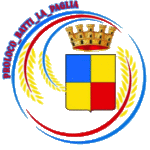L’Operation Avalanche, primo atto dopo l’armistizio, fu la più grande operazione aeronavale del mediterraneo e la seconda, per importanza, di tutta la seconda guerra mondiale dopo lo sbarco in Normandia.
Per la prima volta l’Italia non era più considerata ostile allo schieramento alleato e tra Pontecagnano, Battipaglia e Paestum sbarcò il grosso del contingente alleato ovvero 100.000 soldati britannici e 70.000 soldati americani. Si trattava del primo assalto a quella che Hitler definiva la “Fortezza Europa”, per questa ed altre singolarità deve essere considerata tra gli episodi più significativi della storia della seconda guerra mondiale e dell’Italia:
- L’armistizio con le forze Alleate, già firmato giorni prima a Cassibile, venne reso pubblico proprio per l’approssimarsi del convoglio alleato alle coste del salernitano
- L’operazione segnò l’inizio della ritirata dei tedeschi sulla linea Gustav verso Roma
- Determinò la liberazione del primo campo di detenzione a Ferramonti e successivamente del centro di detenzione di Campagna
- Il generale Vincenzo Ferrante Gonzaga, della divisione costiera, fu il primo alto ufficiale italiano ucciso dai tedeschi per il rifiuto di cedere le armi dopo l’8 settembre.
- Il Velella fu l’ultimo dirigibile affondato dai britannici a largo di punta Licosa, ad armistizio ormai già siglato, il 7 settembre del 1943. I 50 marinai giacciono ancora in fondo al mare con il relitto.
- Salerno divenne nel 1944 sede provvisoria del governo italiano e di fatto prima capitale della Nazione liberata.
- A Salerno si insediò il primo governo unitario antifascista nel quale Bonomi sostituì il maresciallo Badoglio
- Ultimo atto del governo, prima di rientrare a Roma, fu la proclamazione del diritto degli italiani ad autodeterminare la forma di governo
- Seppur non fossero più considerati belligeranti gli abitanti e le case di numerose città della Piana furono stravolte dallo sforzo bellico in particolare quello alleato.
Nei concitati giorni e mesi successivi l’avvicinarsi delle truppe alleate determinò una serie di tragici eventi quali l’inizio dei rastrellamenti di massa a cominciare dal ghetto di Roma
Avalanche day è un’idea dell’Associazione Mu.Bat che il Comune di Battipaglia ha recepito come propria e realizzato con la stessa associazione già dal 2017. Mubat ha predisposto un progetto pluriennale per rendere l’evento un appuntamento fisso per i cittadini ampliabile a tutta l’area del conflitto, con un percorso culturale collettivo. Dal 2018 Battipaglia con queste sue manifestazioni aderisce al neocostituito comitato per le celebrazioni della provincia con i comuni di Salerno, Pontecagnano, Eboli, Campagna, Capaccio Paestum, Cava dei Tirreni e Pontecagnano Faiano.
E’ l’avvio di un sistema di rete che già dall’inizio la nostra proposta aveva auspicato e alla quale ora aderisce con entusiasmo. L’obiettivo è di sfruttare le sinergie e le collaborazioni, evitare gli accavallamenti e le duplicazioni, costruire un brand comune, sfruttando investimenti già previsti per moltiplicarne gli effetti di comunicazione grazie alla forza del gruppo e della rete.
Il progetto vede il coinvolgimento attivo delle scuole a partire dall’Istituto Comprensivo Gatto di Battipaglia che ha fatto da apripista agli altri istituti. Nel 2018 l’IC Gatto ha predisposto una proposta per il programma Erasmus plus basata sul progetto Mubat. Da settembre dello stesso anno l’Unione Europea, mediante il programma Erasmus plus, sostiene il progetto “Avalanche – the house of the rising memory” consentendo uno scambio culturale e di esperienze con gli allievi del college Diderot di Tourlaville in Normandia.
Il progetto è stato sostenuto dalla Regione Campania, nel quadro degli interventi a favore delle iniziative culturali, e dal Ministero per i Beni e le Attività Culturali, mediante il Fondo Nazionale della Rievocazione Storica







The project
Operation Avalanche, the first act after the armistice, was the largest air-naval operation in the Mediterranean and the second most important operation of the entire Second World War after the Normandy landings. It was the first operation in which Italy was no longer considered belligerent by the Allies and the bulk of the allied contingent, ie 100,000 British soldiers and 70,000 American soldiers, landed between Pontecagnano, Battipaglia and Paestum. Some singularities make the operation a very important episode for the history of the Second World War and of Italy:
- The armistice with the Allied forces, signed days before at Cassabile, was made public because the Allied convoy was approaching the coast of Salerno.
- The operation marked the beginning of the retreat of the Germans on the Gustav line towards Rome.
- The operation allowed the liberation of the first detention camp at Ferramonti and then of the one at Campagna.
- Coastal division general Vincenzo Ferrante Gonzaga was the first Italian high officer killed by the Germans for refusing to surrender their weapons after the 8th of September.
- The Velella was the last airship sunk by the British off Punta Licosa on 7th September 1943, when the armistice had already been signed. The 50 sailors still lie at the bottom of the sea with the wreck.
- in 1944 Salerno became the provisional seat of the Italian government and in fact the first capital of the liberated nation.
- The first anti-fascist unitary government took office in Salerno, in which Bonomi replaced Marshal Badoglio.
- The last act of the government before returning to Rome was the proclamation of the right of Italians to self-determine the form of their government.
- Although they were no longer considered belligerent, the inhabitants and houses of numerous cities of the Piana were overwhelmed by the war effort, in particular by the Allied one.
During the agitated days and months after the approaching of the Allies, there were several tragic events, such as the beginning of the mass raids starting from Roma’s ghetto.
Avalanche day is an idea of the Mu.Bat Association created in 2017 with the Municipality of Battipaglia, which has felt this idea as its own. Mubat has prepared a multi-year project in order to make the event a fixed appointment for citizens and to make it extendable to the entire conflict area through a collective cultural process. These events have allowed Battipaglia to join the newly established committee for the celebrations of the province with the municipalities of Salerno, Pontecagnano, Eboli, Campagna, Capaccio Paestum, Cava dei Tirreni and Pontecagnano Faiano since 2018.
It is the start of a network system that our proposal had hoped for from the beginning and to which it now adheres with enthusiasm. The goal is to exploit synergies and collaborations, avoid overlaps and duplications, build a common brand, exploiting the investments already planned in order to multiply the communication effects thanks to the strength of the group and of the network.
The project sees the active involvement of schools starting from Battipaglia Comprehensive Institute Gatto which was the forerunner to the other institutes. In 2018 the IC Gatto prepared a proposal for the Erasmus plus program based on the Mubat project. Since September of the same year, the European Union has supported the “Avalanche – the house of the rising memory” project through the Erasmus plus program, allowing a cultural exchange and experiences with the students of the Diderot college of Tourlaville in Normandy.
The project was supported by the Campania region in the framework of interventions in favour of cultural initiatives and by the Ministry for Cultural Heritage and Activities through the National Historical Re-enactment Fund.
Le Projet
L’opération Avalanche, le premier acte après l’armistice, était la plus grande opération aéronavale en Méditerranée et la deuxième, en importance, de toute la Seconde Guerre mondiale après le débarquement de Normandie.
Pour la première fois, l’Italie n’est plus considérée comme hostile au déploiement allié et entre Pontecagnano, Battipaglia et Paestum débarque le gros du contingent allié, soit 100 000 soldats britanniques et 70 000 soldats américains. C’était le premier assaut contre ce qu’Hitler appelait la “Forteresse Europe”, pour cette singularité et d’autres, elle doit être considérée comme l’un des épisodes les plus significatifs de l’histoire de la Seconde Guerre mondiale et de l’Italie :
- L’armistice avec les forces alliées, déjà signé quelques jours auparavant à Cassibile, a été rendu public précisément parce que le convoi allié s’est approché de la côte de Salerne
- L’opération marque le début de la retraite allemande sur la ligne Gustav vers Rome
- Il a déterminé la libération du premier camp de détention de Ferramonti et par la suite du centre de détention de Campagna
- Le général Vincenzo Ferrante Gonzaga, de la division côtière, est le premier officier supérieur italien tué par les Allemands pour avoir refusé de rendre leurs armes après le 8 septembre.
- Le Velella fut le dernier dirigeable coulé par les Britanniques au large de Punta Licosa, avec un armistice déjà signé, le 7 septembre 1943. Les 50 marins gisent toujours au fond de la mer avec l’épave.
- Salerne devint en 1944 le siège provisoire du gouvernement italien et en fait la première capitale de la nation libérée.
- Le premier gouvernement unitaire antifasciste a pris ses fonctions à Salerne, dans lequel Bonomi a remplacé le maréchal Badoglio
- Le dernier acte du gouvernement, avant de retourner à Rome, fut la proclamation du droit des Italiens à déterminer eux-mêmes la forme de gouvernement
- Bien que les habitants et les maisons de nombreuses villes de la plaine ne soient plus considérés comme des belligérants, ils sont bouleversés par l’effort de guerre, en particulier celui des alliés.
Dans les jours et les mois mouvementés qui ont suivi, l’approche des troupes alliées a conduit à une série d’événements tragiques tels que le début des rafles de masse à partir du ghetto de Rome.
La journée des avalanches est une idée de l’association Mu.Bat que la municipalité de Battipaglia a acceptée comme sienne et réalisée avec la même association depuis 2017. Mubat a préparé un projet pluriannuel pour faire de l’événement un rendez-vous fixe pour les citoyens qui peut être étendu à toute la zone du conflit, avec un parcours culturel collectif. Depuis 2018, Battipaglia avec ces événements a rejoint le comité nouvellement créé pour les célébrations de la province avec les municipalités de Salerne, Pontecagnano, Eboli, Campagna, Capaccio Paestum, Cava dei Tirreni et Pontecagnano Faiano.
C’est le début d’un système de réseau que notre proposition avait espéré au départ et auquel elle adhère désormais avec enthousiasme. L’objectif est d’exploiter les synergies et les collaborations, d’éviter les chevauchements et les duplications, de construire une marque commune, d’exploiter les investissements déjà prévus pour multiplier les effets de communication grâce à la force du groupe et du réseau.
Le projet voit la participation active des écoles à commencer par le Cat Comprehensive Institute de Battipaglia qui a été le précurseur des autres instituts. En 2018, IC Gatto a préparé une proposition pour le programme Erasmus plus sur la base du projet Mubat. Depuis septembre de la même année, l’Union européenne, à travers le programme Erasmus plus, soutient le projet “Avalanche – la maison de la mémoire montante”, permettant un échange culturel et des expériences avec les étudiants du collège Diderot de Tourlaville en Normandie .
Le projet a été soutenu par la Région Campanie, dans le cadre d’interventions en faveur d’initiatives culturelles, et par le Ministère du Patrimoine et des Activités culturelles, à travers le Fonds national de reconstitution historique.